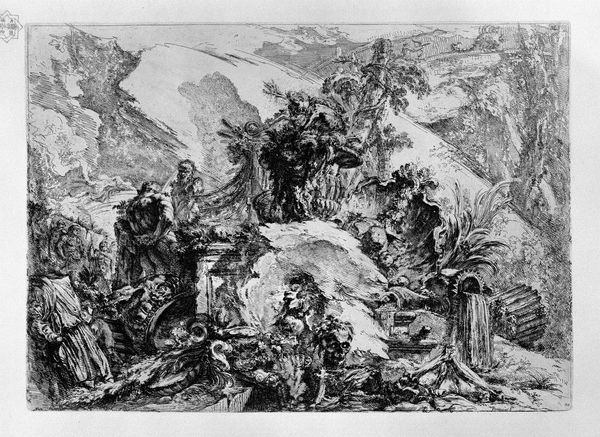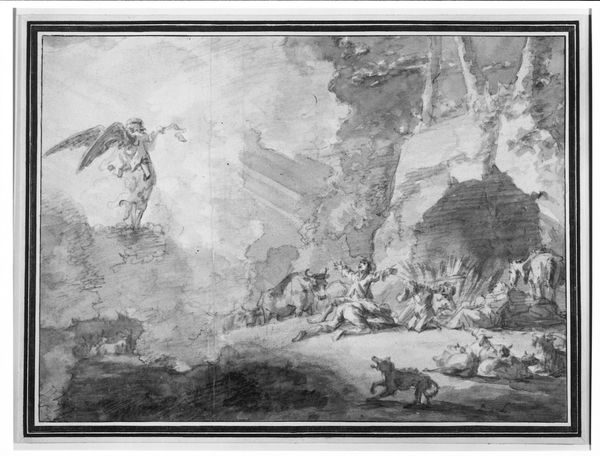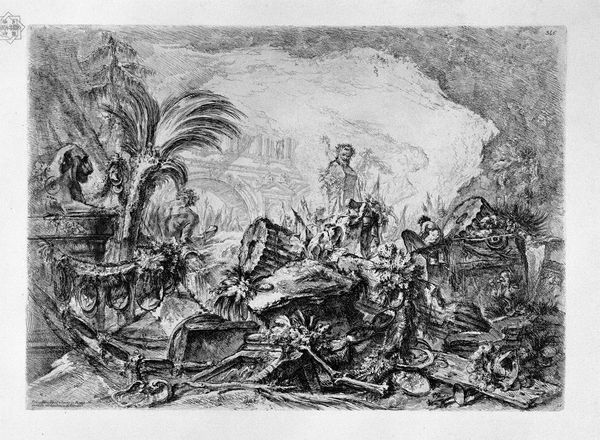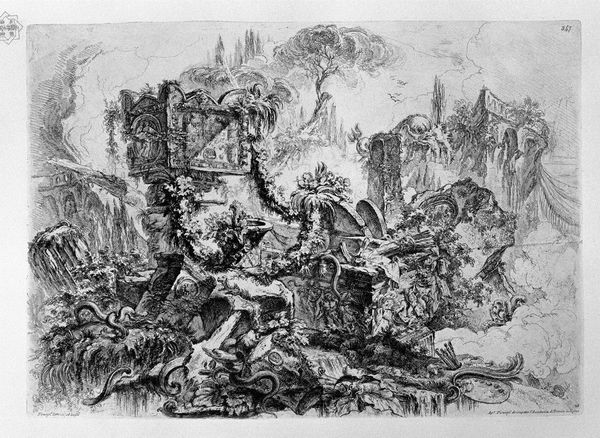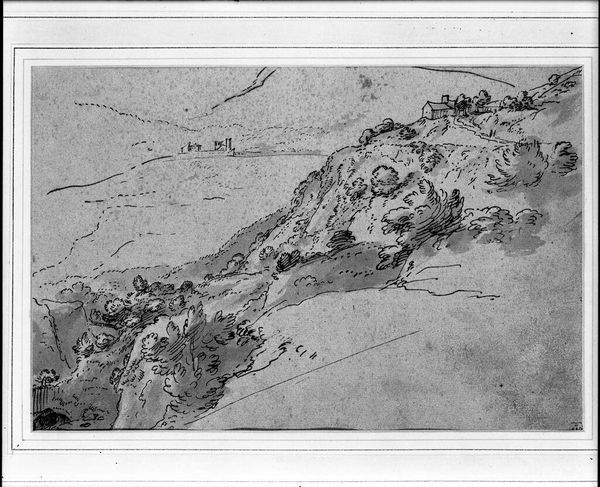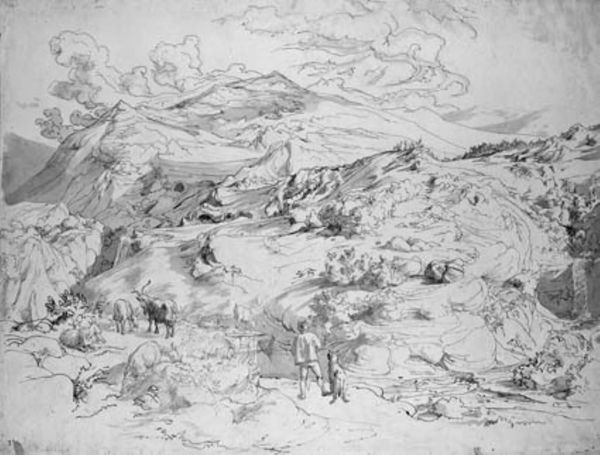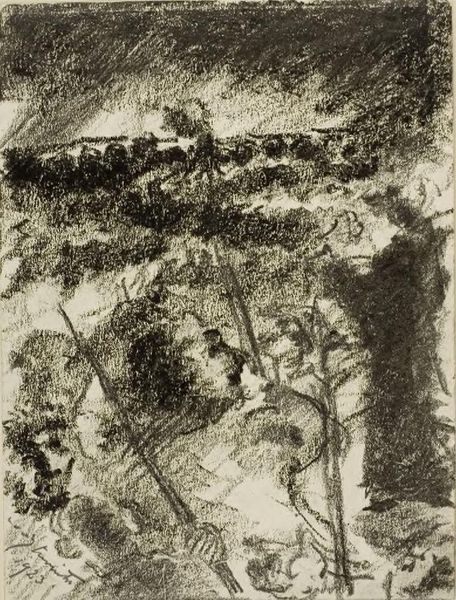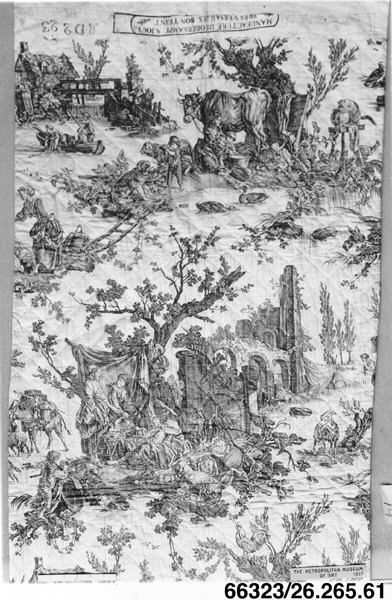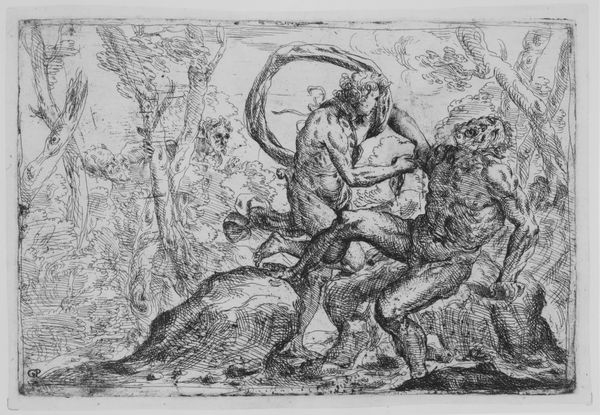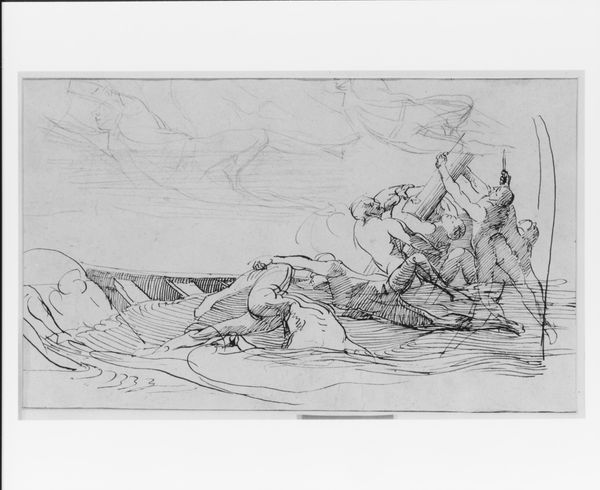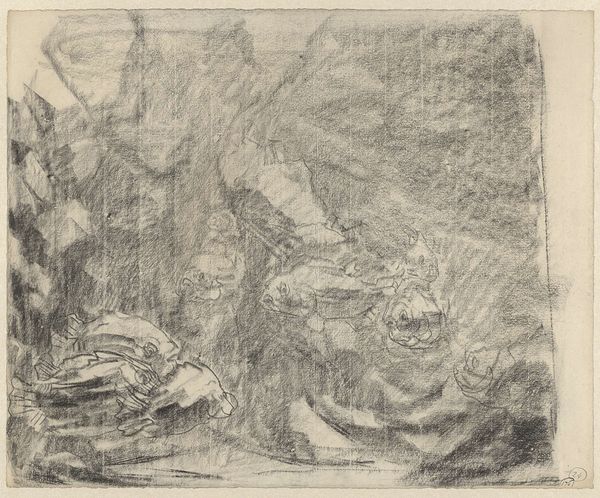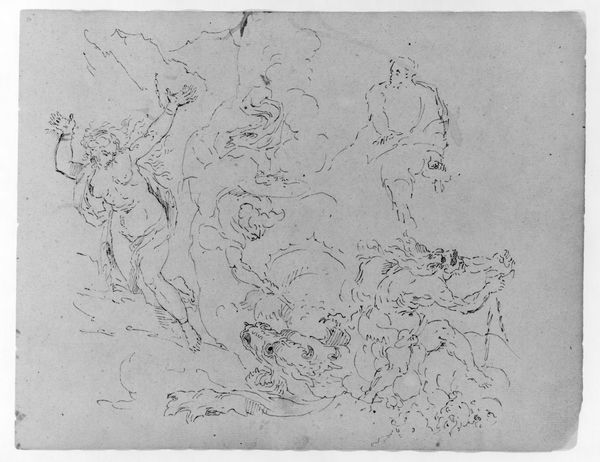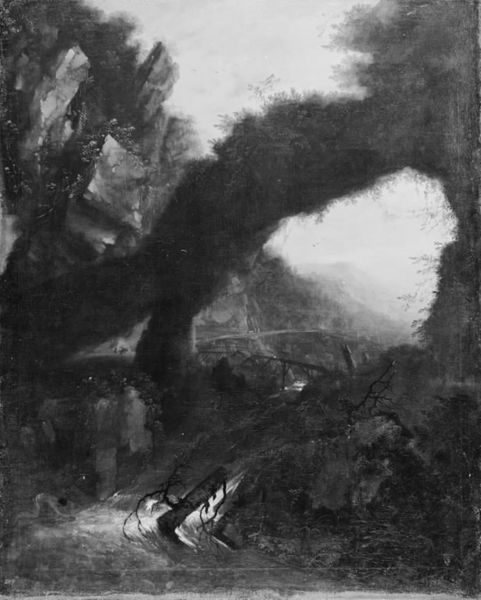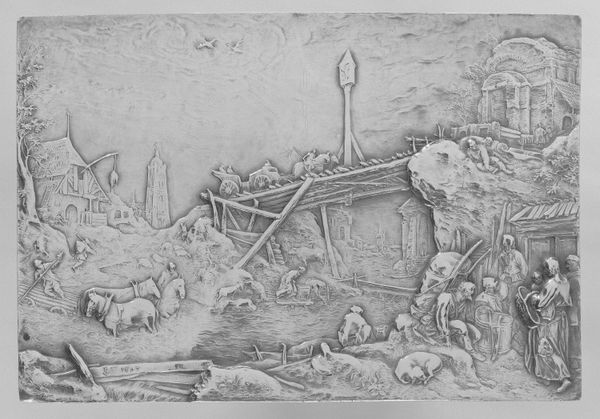
Caprice decorative frames in the middle of a wall with a oval in the upper left a barrel and a hand pours a drink, the lower a syringe, a club, a caduceus, a censer smoke, an hourglass, skulls and bones 1748
0:00
0:00
print, etching
#
allegory
#
baroque
# print
#
etching
#
vanitas
#
decorative-art
Copyright: Public domain
Giovanni Battista Piranesi made this print, Caprice, using etching in the 18th century. This intricate composition weaves together symbols of life and death. Notice the skulls, bones, and hourglass—memento mori reminding us of life’s transience. Juxtaposed with these are symbols of vitality: a barrel, a hand pouring a drink, and the caduceus. The caduceus, a staff with entwined serpents, historically represented Hermes and commerce. It then became associated with medicine, embodying healing and life-sustaining forces. From ancient Greece to modern medicine, the symbol evolves, adapting to cultural needs and interpretations. This recurring imagery suggests a timeless dance between opposing forces, deeply embedded in our collective memory. Such intense, often conflicting emotional states echo through history, engaging viewers on a subconscious level, reminding us of the cyclical nature of existence.
Comments
No comments
Be the first to comment and join the conversation on the ultimate creative platform.
